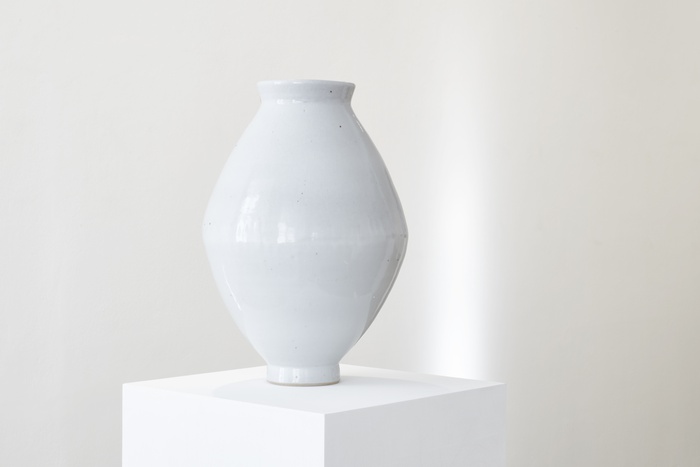

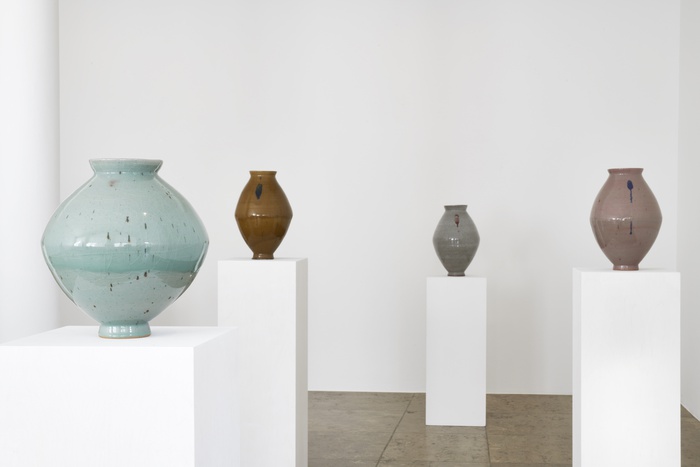
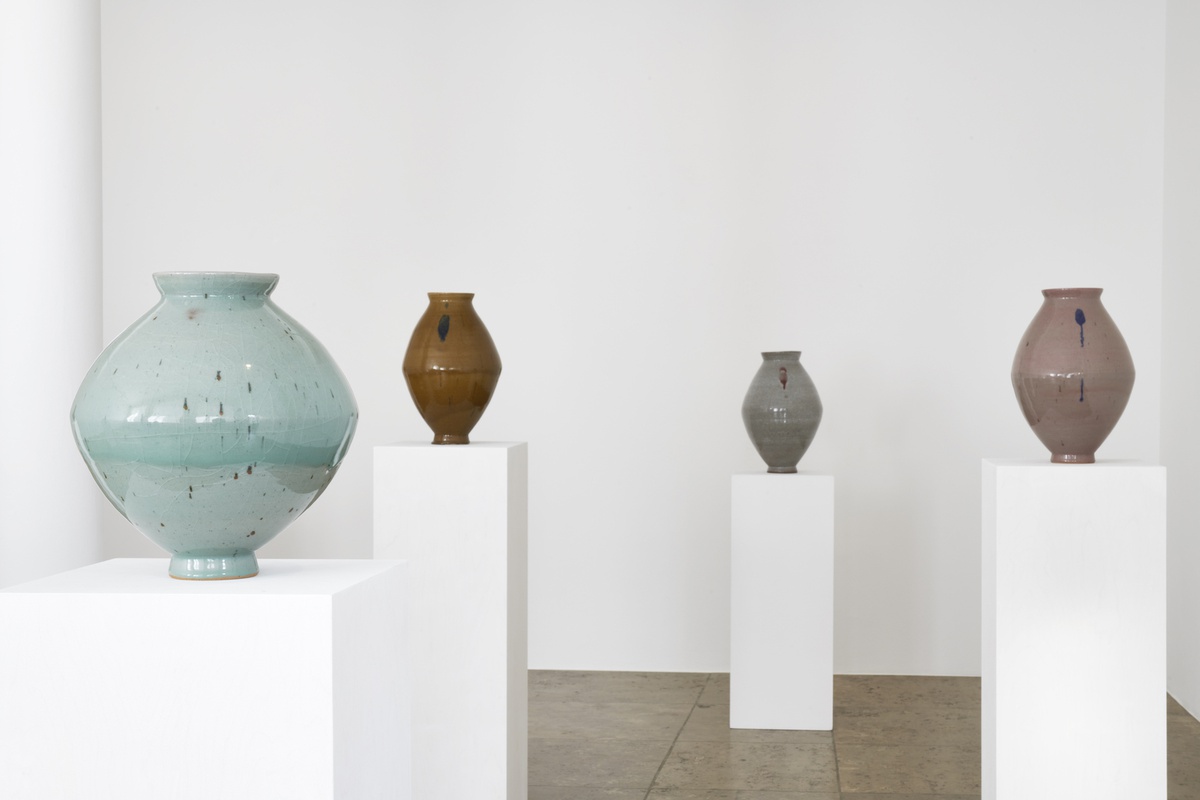
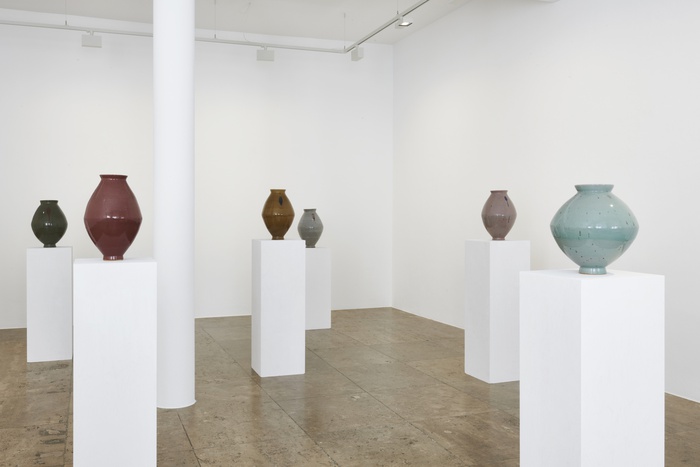
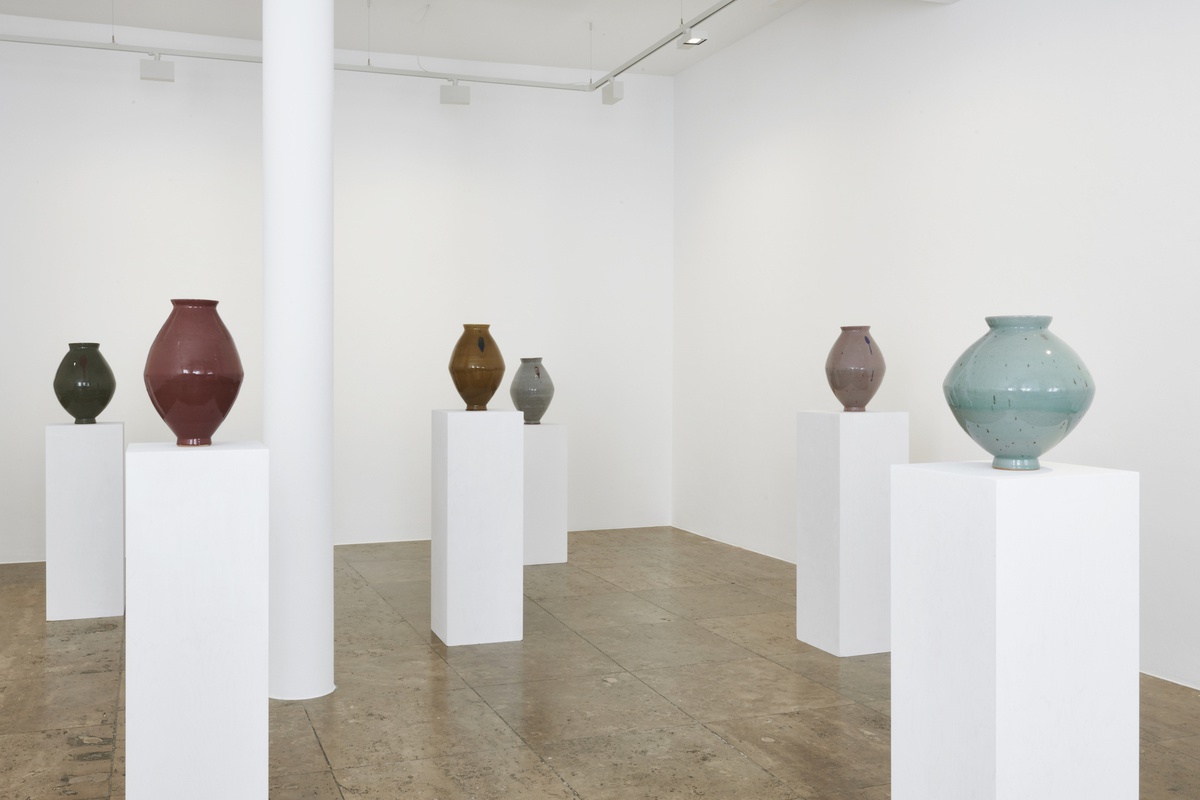
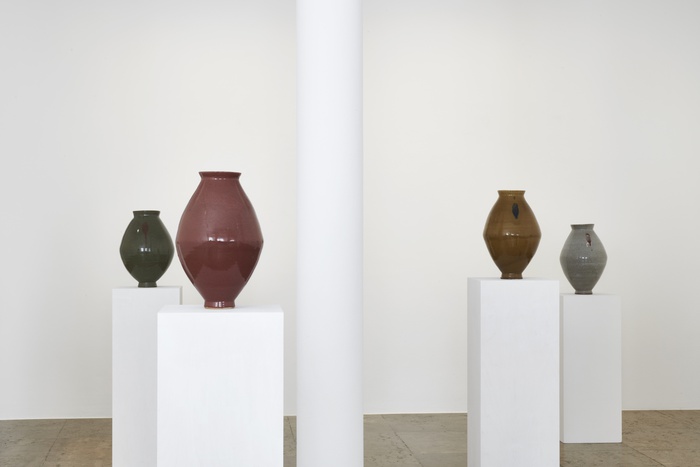
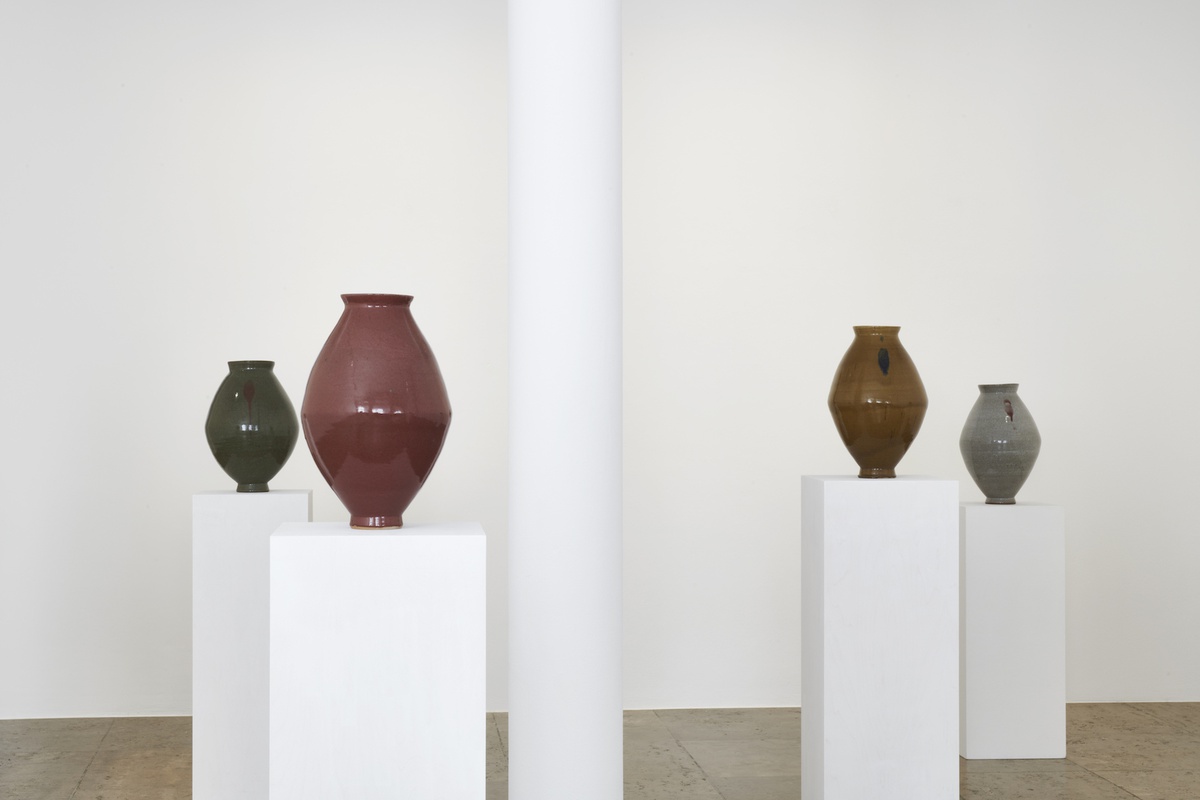
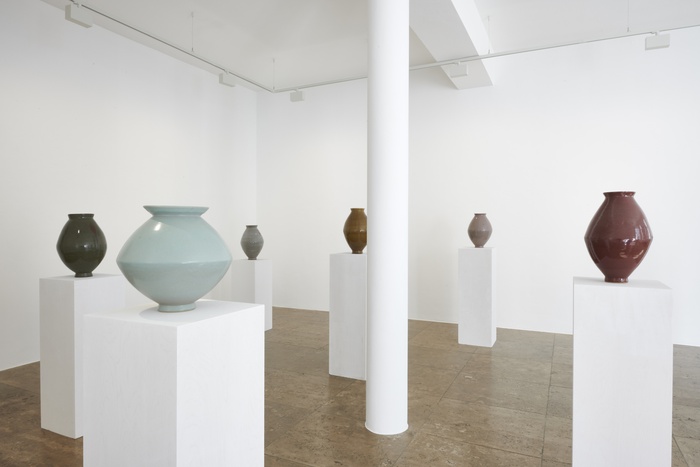
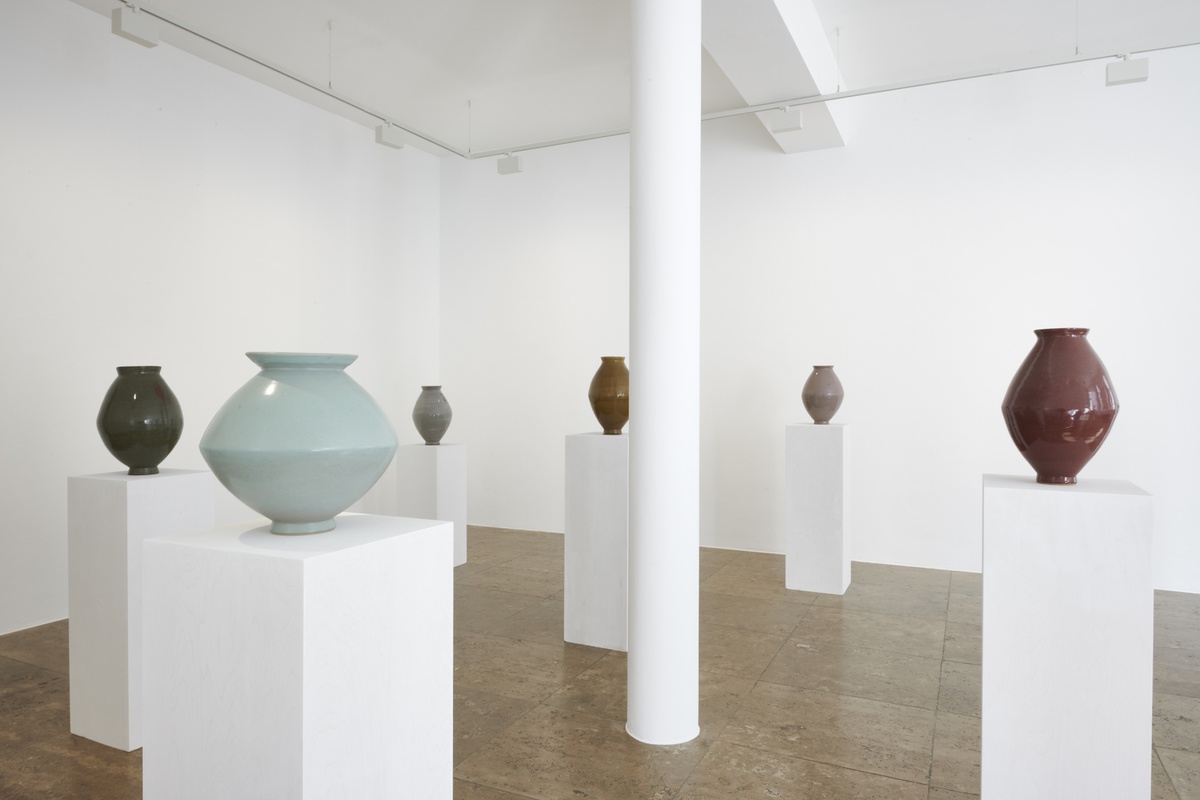
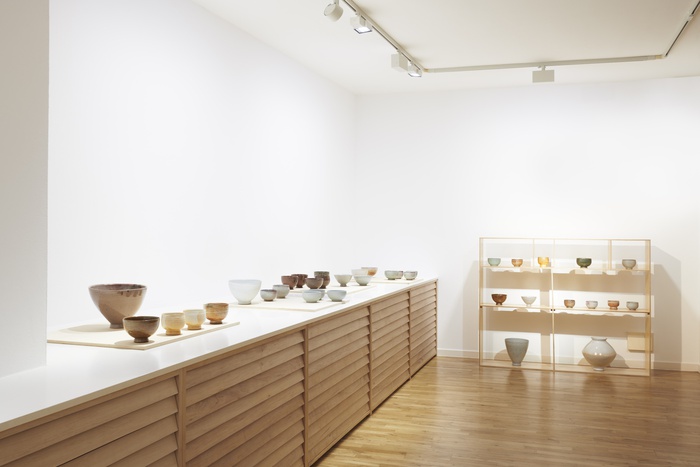
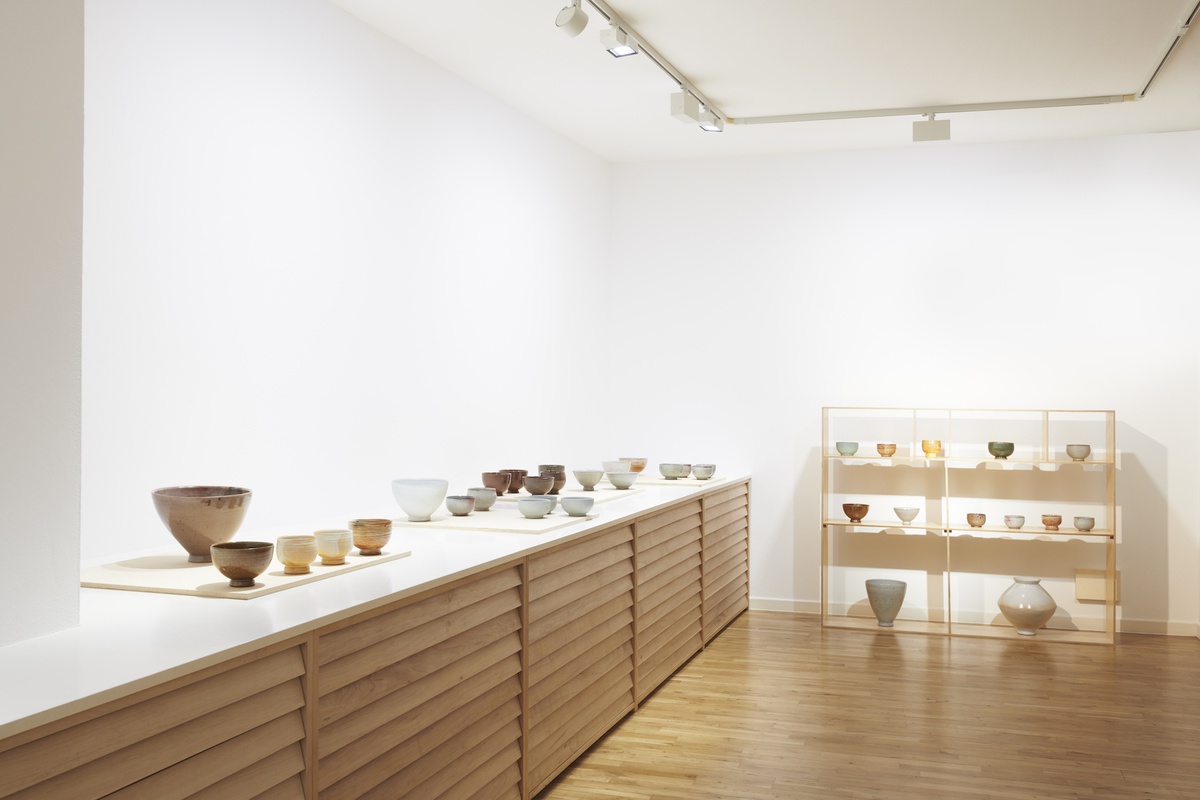
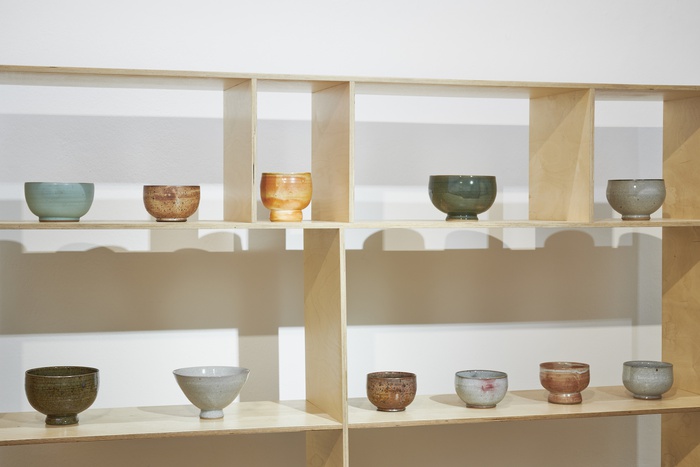
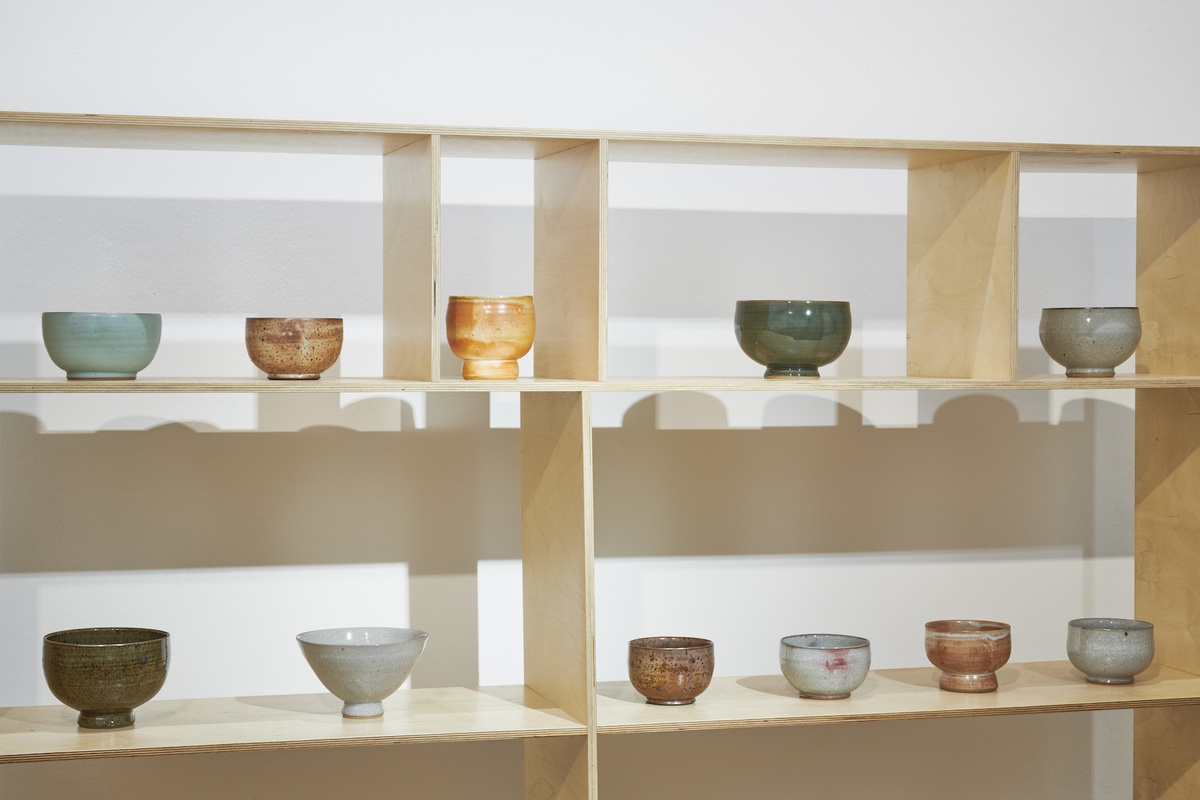


Exhibition view, Jahn und Jahn, Munich, 2022
Exhibition view, Jahn und Jahn, Munich, 2022
Exhibition view, Jahn und Jahn, Munich, 2022
Exhibition view, Jahn und Jahn, Munich, 2022
Exhibition view, Jahn und Jahn, Munich, 2022
Exhibition view, Jahn und Jahn, Munich, 2022
Exhibition view, Jahn und Jahn, Munich, 2022
Exhibition view, Jahn und Jahn, Munich, 2022
The title "Spindle Vases and Spinach Bowls" perhaps expresses a strange imbalance in the naming of objects. Yet these are precisely the programmatic cornerstones of Young-Jae Lee’s current work. Spindle vases – essentially more object than vase – live from their volume. Their forms are characterized by expansion and contraction, soft contours and sharp edges. Positioned with their broadest points next to each other, two bowls can be installed in various ways. They can exist in perfect symmetry or, as seen in the exhibition, asymmetrically, gently combined with a distinctly elongated upper bowl, or glazed with a dark color. The spindle vases are an amalgam of Korean ceramics, the so-called moon jars, and artificial design typical of the western world. The artistic claim that Young-Jae Lee raises with these vessels corresponds to the quality of plain, white Korean porcelain vessels from the Joseon dynasty. [1] Their extraordinary beauty lies in the paired aesthetic ideals of simplicity and elegance, the emotional and the controlled, as well as variation within sameness and deviation within the normative.
The bowl has been significant for Young-Jae Lee since the beginning. Again, she refers to her Korean heritage, but also positions the bowls in a conceptual framework by presenting them in installations. Through a rich variety of forms, the viewer also encounters large, elongated, almost chalice-like shapes on a huge scale, which come from the sacral bowls commissioned by Father Friedhelm Menekes SJ in 2002 for the Kunst-Station Sankt Peter in Cologne. And finally, there are the spinach bowls, the result of Young-Jae Lee’s extremely complex experience of the relationship between east and west. The name incorporates provocation, humor, and assertiveness. With the bowl as a drinking vessel, the tea bowl comes into focus and subsequently the search for its form and meaning. At this point, complications arise. The tea bowl is almost always classified as Japanese, and opinions about the “correct” form can be highly determinative. In general, the reception of Korean art in this country has for a long time been dominated by Chinese and Japanese art. A look at history shows how much Korea has suffered culturally and politically as a result of Japan. [2] More pressing for Young-Jae Lee is the question of the tea bowl in Korea, where brewed leaf tea is also drunk. However, for political reasons, it was only consumed in the private realms of monasteries and some educated households in the Joseon period – and importantly without it becoming cult-like, as in Japan. Two realizations conclude her investigation and allay her doubts: there are no fixed tea bowl shapes in Korea; bowls, whether for Japanese green matcha (tea for the tea ceremony) or dishes such as green spinach, are always equal.
Among the spinach bowls are those whose shapes are based on Korean sacrificial bowls for the altar, meaning that the bowl part, which opens relatively wide, rests on a broad, high base. They are usually covered with a whitish glaze or with a type of Japanese Shino glaze developed by Young-Jae Lee. Most of the spinach bowls are characterized by a low, bowl-like shape with a wide but subtle ring as a base. In comparison to previous bowls, which were elegant and almost capricious, not least because of their bases, the newer pieces appear sedate and modest at first glance, but at the same time they gain significantly in stature. Their glazes are more robust, richer in color and speckles, or in spreading crystal craquelure. Their utilitarian character is unmistakable.
With the spinach bowls, Young-Jae Lee has emancipated herself from formal precedents and her experiences and attitudes towards the reception of Korean art, whether in Europe, Japan, or in Korea itself. Her love, it should be emphasized, is for the ceramics of the Joseon dynasty. Thus her spindle vases are akin to the unique white porcelain of the period, her spinach bowls a distant echo of the spirit of the Buncheong ware of that time, an unpretentious yet powerful type of ceramics that broke with the conventions of its noble predecessors, the celadons of the Goryeo dynasty. [3]
Young-Jae Lee came to Germany in 1972 after studying at the University of Art Education in Seoul from 1968 to 1972. In Germany she studied under the ceramist Christine Tappermann, and from 1973 to 1978 she studied ceramics at the University of Applied Sciences Wiesbaden under Margot Münster and design under Erwin Schutzbach. Moreover, she completed an internship with Ralf Busz in 1976/77. She opened her first workshop in 1978 in Sandhausen near Heidelberg. From 1984 she was an artistic research assistant at the University of Kassel until she took over the Margaretenhöhe Ceramics Workshop in Essen in 1987. In addition to her individual pieces, the bowls and vases, she has developed an extensive range of tableware that can be combined in many ways in terms of shape and, above all, color according to individual tastes and needs. Young-Jae Lee has exhibited in museums and private galleries in Europe, America, Korea, and Japan. Since 1988, Galerie Fred Jahn has regularly hosted exhibitions of Young-Jae Lee's own pieces as well as tea ceramics and the dishes produced by the Margaretenhöhe Ceramics Workshop.
Gisela Jahn
[1] Joseon dynasty: 1392-1910, influenced by Confucianism.
[2] Japanese campaigns in Korea: 1593 and 1595, Japanese occupation: 1910-1945.
[3] Goryeo dynasty: 918-1392, influenced by Buddhism.